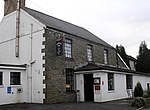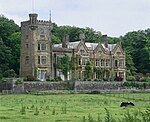Five Roads

Five Roads (Welsh: Pum Heol) is a village on the B4309 road in Carmarthenshire, Wales, 5 miles (8.0 km) from Llanelli and 10 miles (16 km) from Carmarthen. The name comes from the fact that there are five roads leading off Y Sgwar (English: The Square); the central part of the village on the main road. The five roads are: Rehoboth Road, Horeb Road, Heol Hen, and the entrance and exit of the main road, known as Ynys-y-Cwm Road on the Llanelli side and Eclipse Terrace on the Carmarthen side. There are two pubs, The Stag, situated centrally on the main road, and the Waun Wyllt 1/4 mile distant in the neighbouring hamlet of Horeb, which abuts Five Roads. The Stag pub is famous as the meeting place of the Rebecca Rioters who gathered there to plan raids in the 18th century. Prior to its refurbishment in 2007 the pub operated a two-bar system with the names of the bar and lounge, reflecting its Rebecca Riots history, named the Dai'r Cantwr Bar and Shoni Sguborfawr Lounge after two of the ringleaders. A blue plaque was unveiled at the pub in 2008 as part of anniversary celebrations.
Excerpt from the Wikipedia article Five Roads (License: CC BY-SA 3.0, Authors, Images).Five Roads
B4309,
Geographical coordinates (GPS) Address Nearby Places Show on map
Geographical coordinates (GPS)
| Latitude | Longitude |
|---|---|
| N 51.733333333333 ° | E -4.1833333333333 ° |
Address
B4309
SA15 5JQ , Llanelli Rural
Wales, United Kingdom
Open on Google Maps



